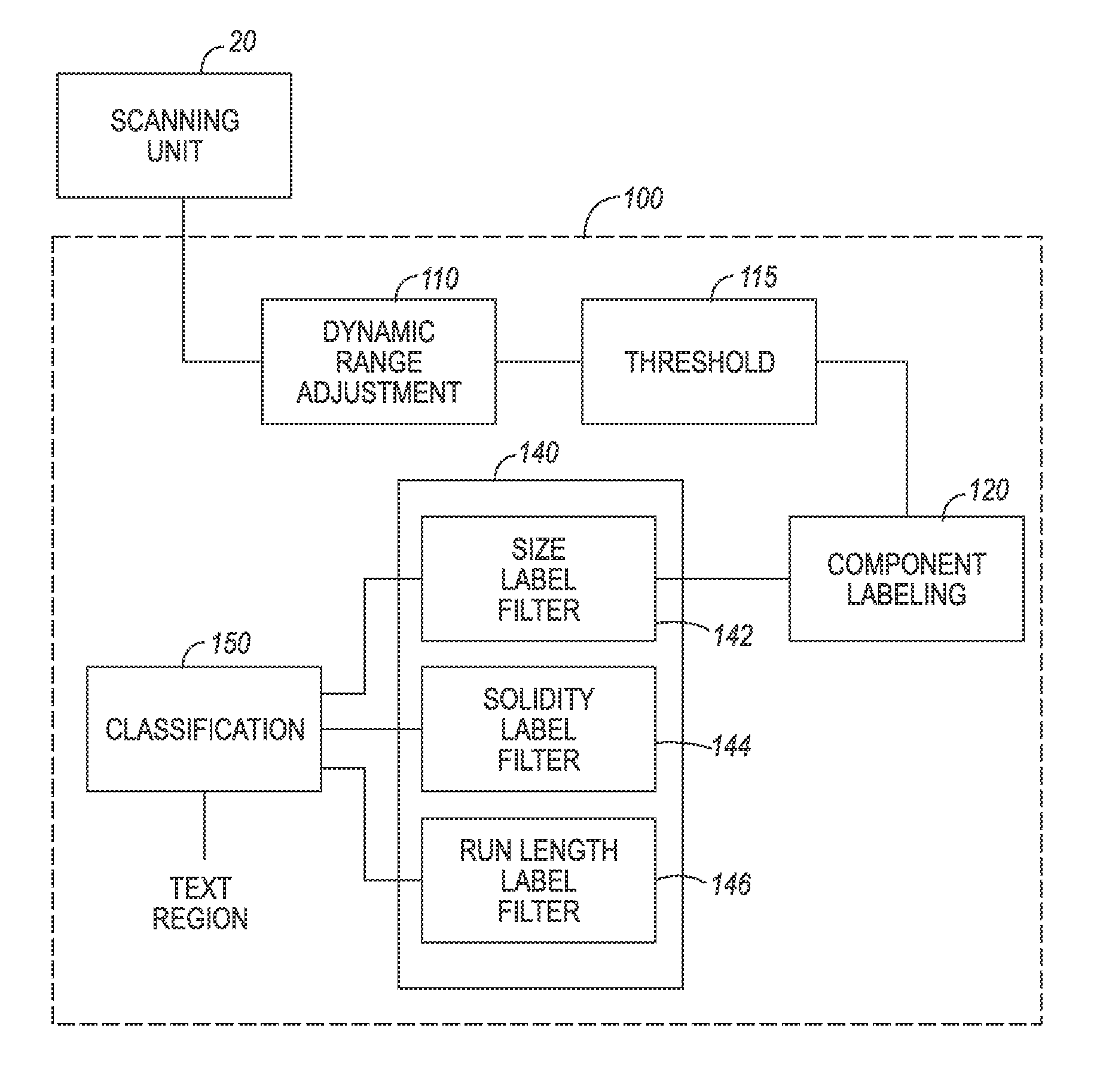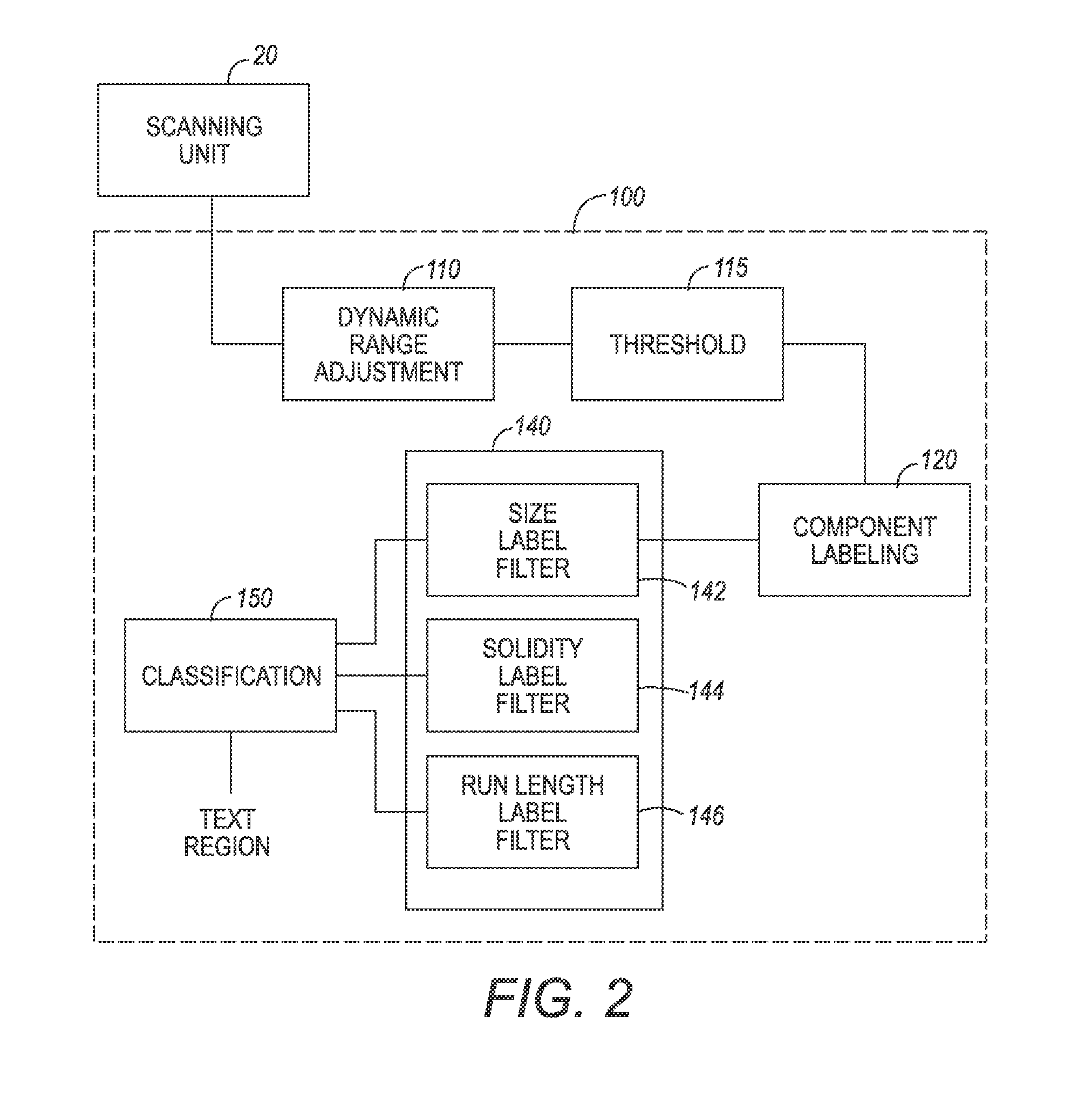System for automated text and halftone segmentation
a technology of automatic text and halftone, applied in the field of automated text and halftone segmentation, can solve the problems of not being suitable for halftone image segmentation, method operating on video signals, and being too computationally complex for real time software implementation,
- Summary
- Abstract
- Description
- Claims
- Application Information
AI Technical Summary
Benefits of technology
Problems solved by technology
Method used
Image
Examples
Embodiment Construction
[0017]For a general understanding of the present invention, reference is made to the drawings. In the drawings, like reference numerals have been used throughout to designate identical elements. In describing the present invention, the following term(s) have been used in the description:
[0018]A “scanner” is a device that captures images from a hardcopy medium and converts them to digital format. The term “scanner” includes any such device, whether flat-bed, hand-held, feed-in, and includes devices that capture images in color or only in black-and-white. Typically scanners move across an image in the “fast-scan” direction (also referred to as the “horizontal” direction) collecting data from a single line in the image, then take a step in the “slow-scan” direction, i.e., the direction normal to the fast-scan direction (also referred to as the “vertical” direction), and collect data from the next line in the image.
[0019]A “pixel” is the smallest unit of visual information that represen...
PUM
 Login to View More
Login to View More Abstract
Description
Claims
Application Information
 Login to View More
Login to View More - R&D
- Intellectual Property
- Life Sciences
- Materials
- Tech Scout
- Unparalleled Data Quality
- Higher Quality Content
- 60% Fewer Hallucinations
Browse by: Latest US Patents, China's latest patents, Technical Efficacy Thesaurus, Application Domain, Technology Topic, Popular Technical Reports.
© 2025 PatSnap. All rights reserved.Legal|Privacy policy|Modern Slavery Act Transparency Statement|Sitemap|About US| Contact US: help@patsnap.com



